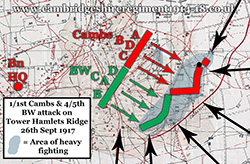
Who Were
The Cambs
The Cambs
at War
1/1st Btn 1914-1919
1914 - 1/1st Overview
1915 - 1/1st Overview
1915 - St Eloi
1915 - Fosse Wood
1916 - 1/1st Overview
1916 - The Schwaben
1916 - St Pierre Divion
1917 - 1/1st Overview
1917 - St Julien
Insignia, Medals & Books
Remembering The Cambs
Biographies
About Us &
This Site
Taking Joist Redoubt - Tower Hamlets Ridge, 26th September 1917
In late September 1917 the Cambridgeshires were still in the Ypres Salient and the summer offensive had been ongoing since July 31st. Since that opening day and the near crippling losses suffered by the already understrength battalion, numerous drafts of fresh replacements reached the Battalion. Many of the men who had been wounded in July also returned to the Battalion. On September 25th, with orders to advance and help push forward a stalled attack the following morning, the 1/1st Battalion, Cambridgeshire Regiment, was still not at full strength and the number of men for the assault stood at less than 500.
The area that the Cambridgeshires were ordered to attack was a ridge of slightly higher ground, south of the Menin Road, known as Tower Hamlets ridge. Situated on part of this higher ground was a German strongpoint known as Joist Redoubt. This fortification was made up of a well-connected network of trenches supported by dugouts, concrete pillboxes and gunpits spread across the ridge, covering both the east and west slopes.
An earlier British attack in the area had met with some success, taking some ground, but the exhausted assaulting troops stalled, having suffered heavy losses, at the foot of the gentle slope leading up to Joist Redoubt. The weary men formed an improvised line of positions, many nothing more than shell craters. These positions were under observation from the German troops on the higher ground and movement in daylight was all but impossible. It was from these unenviable positions that the Cambridgeshires were to launch their attack.
Under the cover of darkness the Cambridgeshires moved up, stopping for an arranged last hot meal and drink, before making the difficult journey to the assembly line. Just like with their legendary attack on the Schwaben Redoubt nearly a year earlier, the 1/1st Cambs would be attacking with the 4/5th Black Watch on their right. The two battalions arrived at their start line on time, with the Cambs spread out, three Coys wide, over 210 yards and the Black Watch over 290 yards. Due to the narrow width of the area involved and to aid with efficiency, the two Battalion Commanding Officers elected to share an HQ location in captured concrete bunker.
The joint Battalion HQ was situated on the higher ground behind the assembly line, it was one of the pillboxes recently captured and the assaulting units had paid a high price for it, their fallen still lay all around. From this vantage point, Riddell and Sceales (CO of the 4/5th BW) would be able to see the western edge of the Redoubt and the assembly line in the lower ground below. It was clear that communication would be a huge issue in the coming attack. If any German positions along the ridge were not captured then all movement between the captured ground and the old line would be observed. This meant the runners, the backbone of communication, would need to cover a wide stretch of ground, with little to no cover and under heavy fire the whole way.
By 2am on the morning of the 26th September the Cambridgeshires were in positions and the final preparations were made. Thanks to the careful and tireless work of the Battalion’s Second in Command, Major Clayton, the assembly positions and line of advance had been accurately taped out, despite the appalling conditions. In the Cambridgeshires 210-yard wide section, three Coys were to lead the attack with A Coy on the left, D Coy in the middle and C on the right. B Coy was in reserve and would follow just behind the advance until needed. In front of the Cambs lay a shattered moonscape of flooded shell holes rising up the gentle slope; 250 yards away sat the western face of Joist Redoubt, perfectly situated see every move the attackers made.
With the battlefield still blanketed by darkness and morning mist, at exactly 5.50am, September 26th, 1917, the artillery opened fire and the men advanced. Following their orders the men moved as close to the creeping barrage as they could, the planners, recognising how difficult the ground was, had slowed the advance of the barrage but the men still struggled to keep pace. After crossing around 100 yards, some of the men of A and D Coys reached a network of German forward positions. These positions were swiftly dealt with by bayonet and the advance pushed on up the slope.
Leading A Coy’s push had been their young company commander, Captain Frank Ford. He had recently been awarded the Military Cross for his bravery at St Julien and he set about the attack on Joist Redoubt with similar gusto. Early in the advance he was badly wounded in the leg by shrapnel, but refusing to leave his men he sat and continued to urge them forward. His orderly, who was attempting to bind his officer's wounds, was killed and soon Ford fell himself, shot in the head.
Moments after the deluge of shells the barrage lifted from the western face and with the air still full of smoke and debris, the German garrison found the attackers were on them. Ferocious hand-to-hand fighting broke out all along the line as the surprised garrison tried to repel the attackers. The Cambridgeshires, skilled with the bayonet and bomb, pushed through most of the western positions and moved deeper into the network of trenches. B Coy were soon brought up to help the left flank of the Black Watch, who had struggled with their advance which had been over ground even worse than that faced by the Cambs.
By the time the western trenches and fortifications had been cleared and the Cambridgeshires’ attention turned to the eastern positions, visibility across the battlefield was clearing. This brought with it a heavy increase in machine gun, rifle and sniper fire from the German trenches off to the Cambs left. This trench line, called Tower Trench, was supposed to have been attacked and cleared by another battalion, however it soon became clear they had attacked too far to the north. With this section of the German front line still fully occupied, its garrison was able to enfilade the Cambridgeshires as they pushed on their attack. Casualties in A Coy on the left mounted quickly and soon they had lost all their officers.
To the Cambridgeshries right, the 4/5th Black Watch had suffered heavy casualties in the initial attack and were now involved in heavy fighting in the trenches. The Black Watch men were also coming under heavy fire from German positions south of the ridge as well as fire from the uncaptured positions on the far side of the Redoubt. On top of all this German artillery and trench mortar fire was constantly pounding the area, zeroed in on the captured trenches.
With B Company helping the Black Watch push on the eastern side, C and D Coys had by now reached and taken most of their objectives. A Coy on the left had pushed onto towards the far side of the Redoubt, but due to fire from several big concrete emplacements and Tower Trench the men had gone to ground in shell holes to the north. Despite their heavy casualties and the loss of all their officers, the men kept fighting under the leadership of CSM Hatch. In the early afternoon the Germans in Tower Trench launched a counterattack on the northern edge of the Redoubt. This attack was quickly stopped by the men of A Coy, who unleashed a hail of Lewis and rifle fire from their positions in the sea of shell craters.
As the hours since the attack commenced ticked by, the men continued to consolidate and clear the position. B Coy and the Black Watch slowly made gains and finally reached the far side of the southern half of the Redoubt. The positions in this area were found to be overlooked by the enemy and, not wanting to risk further heavy causalities holding an unsustainable line, Sceales pulled his men back to the western side. From here they were still able to hold the captured location and were better protected from the enemy machine gun fire enfilading from the right.
All across the Redoubt, any movement above ground was quickly met with machine gun and sniper fire and all the men could do was focus on consolidating their positions. The Cambridgeshires’ snipers and Lewis gunners were constantly in action, trying to locate and eliminated their German counterparts. Throughout the day countless duels were fought between them and all the while the German artillery continued to rain down on the ridge. By nightfall most of Joist Redoubt was now either in British hands or cleared of the enemy. The northern edge, where the uncaptured Tower Trench connected, and one of the large concrete emplacements in the northeast corner were still however held by the enemy.
As predicted by Riddell, communication with his men had been a nightmare all day. It was proving hard enough to keep a telephone line connected between Battalion HQ and Brigade HQ – a line to the Redoubt would have been simply impossible. With the visual communication stations being repeatedly knocked out by shell the only means of communication with the men at the captured position was through the runners. With Tower Trench still held by the Germans, the ground the runners had to cross was under clear observation. Dodging snipers, rifles, machine guns and artillery with next to no cover, the runners paid a high price and by nightfall most were killed, wounded or totally exhausted. One platoon commander, Lt Basil Quin, on seeing the losses among his runners took matters into his own hands and undertook the perilous journey himself.
As dawn broke on the morning of the 27th September, the men had been holding the Redoubt for 24 hours without resupply or reinforcement. As with the previous afternoon, movement above ground in daylight was met with a hail of bullets. Throughout the afternoon the enemy artillery fire got heavier and at 6.30pm the Germans attacked all along the Division’s front. The Germans, despite advancing under a smoke screen, were spotted and the weary Cambridgeshires leapt into action. Spurred on by NCOs like Sgt Betts, who walked up and down the trench encouraging his men, the attackers were cut down by heavy Lewis and rifle fire. Soon the British artillery were alerted to the attack and after a heavy bombardment things went quiet.
As night fell on the 27th September, the men of B Coy crept forward. Under the cover of darkness they attacked the last remaining section of the Redoubt that was still held by the Germans – the large concrete pillbox in the northeastern corner. During the day the emplacement had received a direct hit from a British 6” artillery gun and the men from B Coy found the defenders all dead from the blast. In the early hours of the morning on the 28th September the relief units finally made their way out to the ridge and both the Cambs and Black Watch were relieved. Despite a bright moon and clear sky the relief went to plan and the Germans remained relatively quiet. By dawn the exhausted and muddy survivors of the Cambridgeshires were back behind the old British front line and was soon being bused back to a camp for a rest.
The 1/1st Battalion, Cambridgeshire Regiment and their 4/5th Black Watch comrades, had spent nearly 48 hours holding Joist Redoubt. During that time the Cambridgeshires had suffered heavy casualties and the Battalion was exhausted and filthy. Of the attacking force of around 500 men, over 200 were now casualties, 62 of which had been killed. Over the following few days the Battalion rested at a camp near Westoutre, south west of the Salient. Here, like after the attack at St Julien, the process of rebuilding the Battalion began again.
The attack on Joist Redoubt was the fourth time the 1/1st Cambridgeshires had taken part in a large scale “over the top” attack and, once again, they had distinguished themselves. Citations and lists of officers and men who had performed individual acts of bravery were written up, resulting in the officers and men of the Battalion receiving one Distinguished Service Order, four Military Crosses, three Distinguished Conduct Medals and 15 Military Medals.
Alongside the gallantry lists there were also promotions for some of the survivors, this included for the commanding officer – Lt Col “Ted” Riddell. Since first joining the Battalion in June 1916, Riddell had commanded them through their toughest fighting. He had proved to be a superb officer who genuinely cared for his men. His promotion meant that he was to leave the Cambridgeshires and take command of the 149th Brigade. As Riddell departed Major Saint returned to take up the position of CO of the 1/1st Cambs. The summer offensive continued to thunder on and soon the Cambridgeshires were on the move again
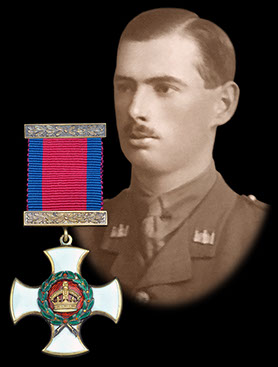
Major Clayton, awarded the DSO.
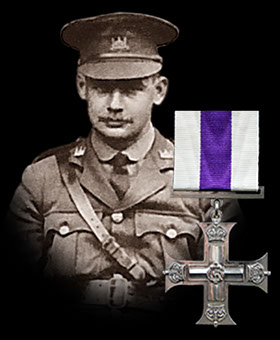
Lt Basil Quin awarded the MC for his bravery at Joist Redoubt.
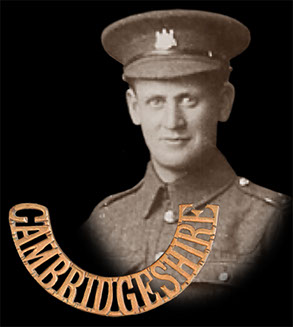
John Brooks, killed in action at Joist Redoubt.
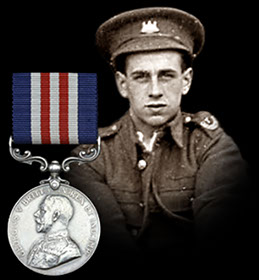
Claude Cross MM, from Cambridge.
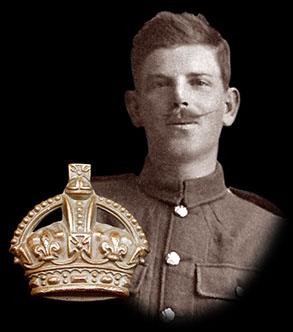
D Coy's acting CSM, Frank Lambert, from Ely, killed in action during the fighting.
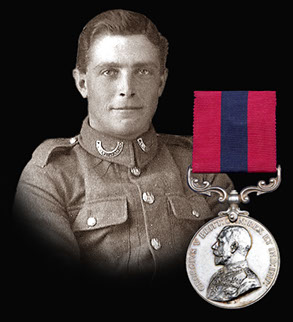
Sgt Harry Betts awarded the DCM.
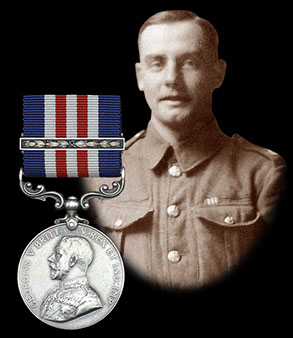
Sgt Flood received a Bar to the Military Medal he was awarded at St Julien.

This site went live on the 14th February 2015 to mark 100 years since the 1/1st Cambs went off to war.
WE WILL REMEMBER THEM
Email us: cambsregt@gmail.com
Copyright 2015, 2016, 2017, 2018, 2019 by Felix Jackson. The information and images on this site should not be reproduced without prior permission.
